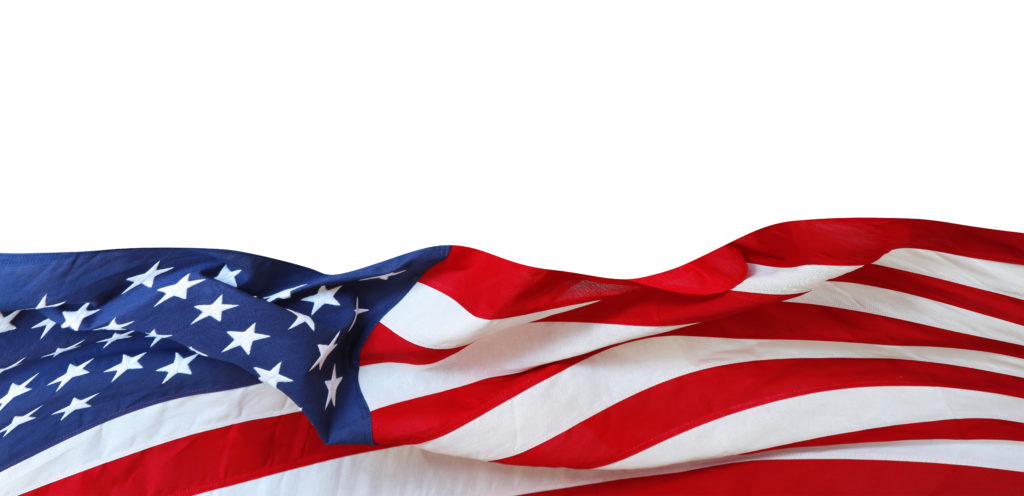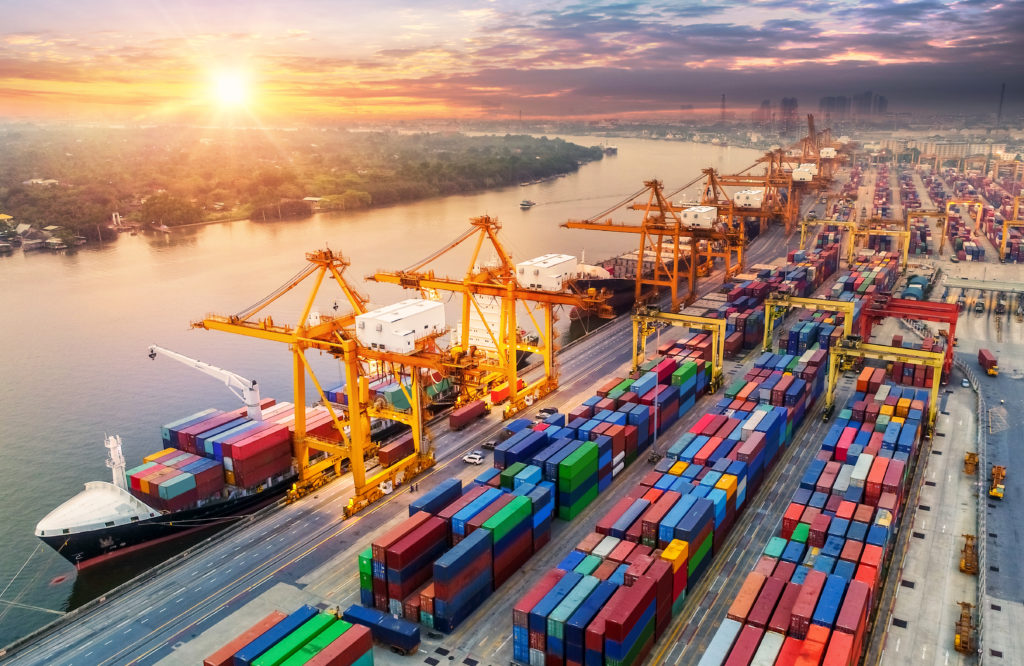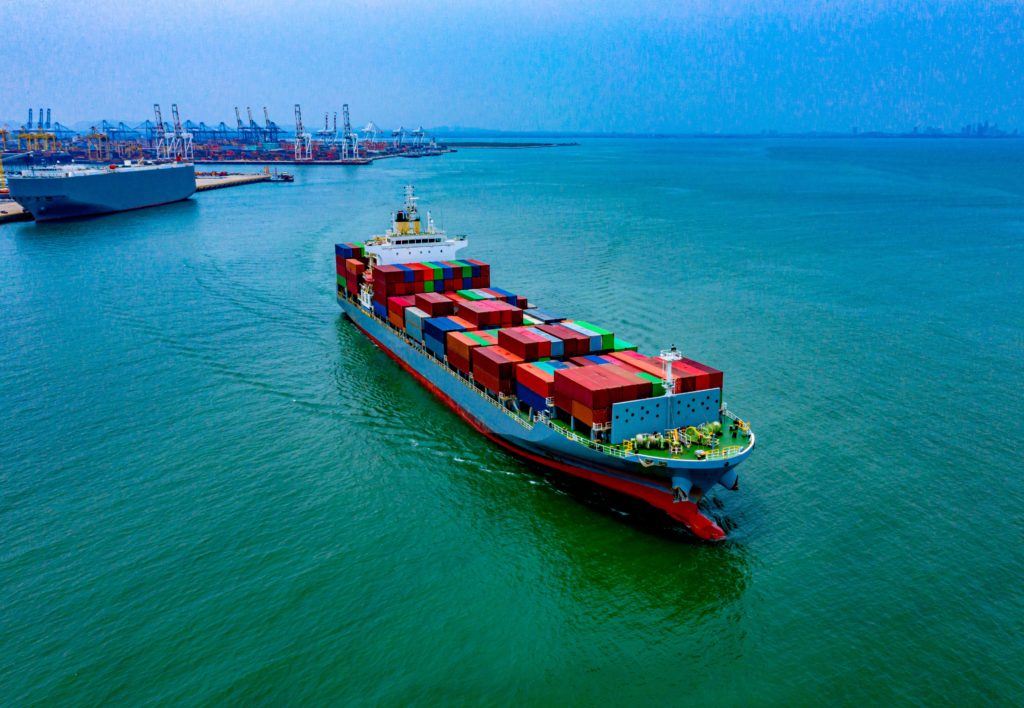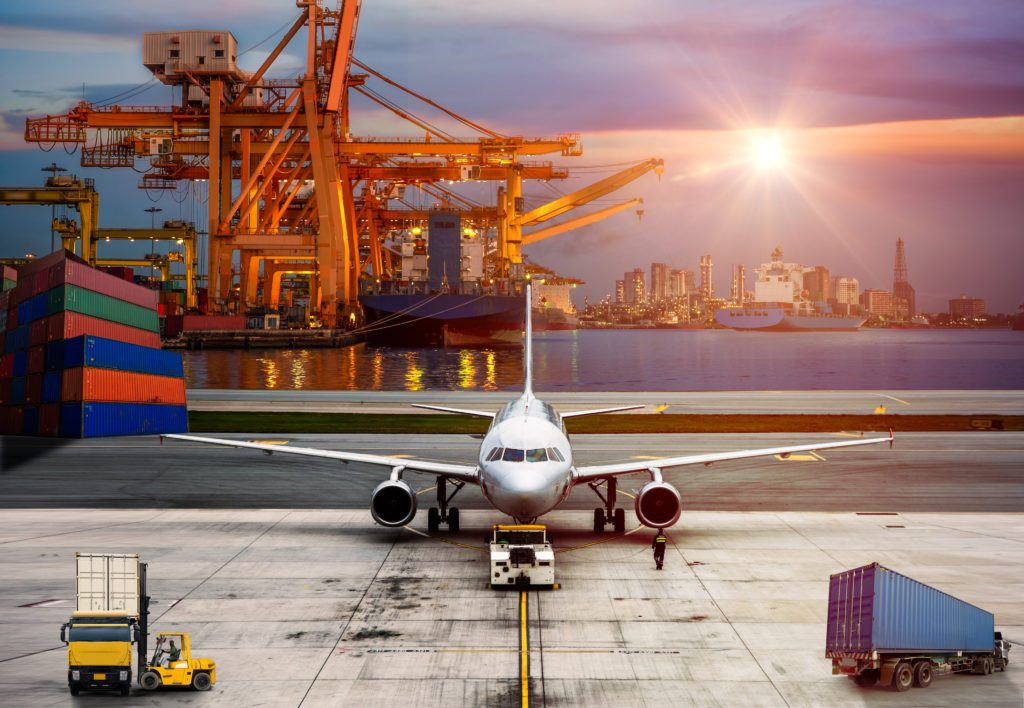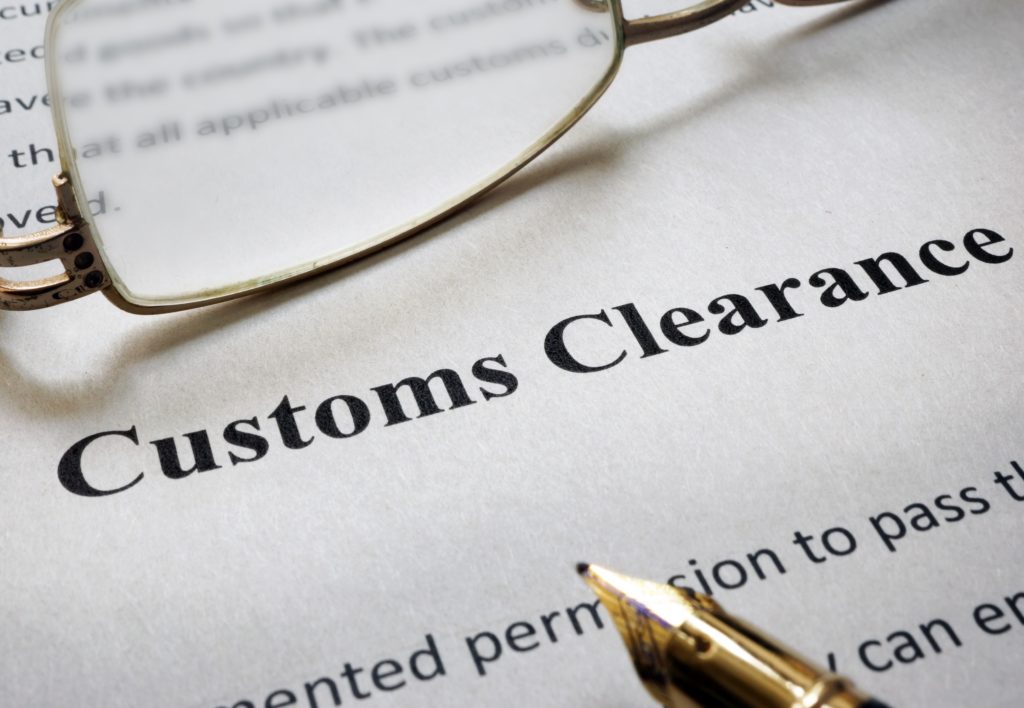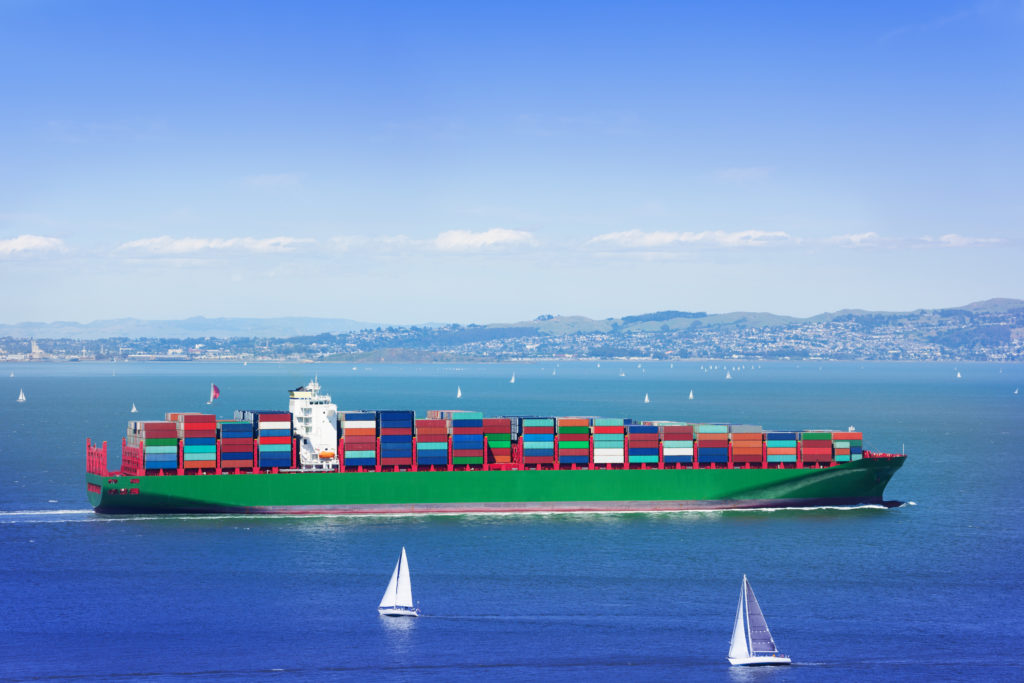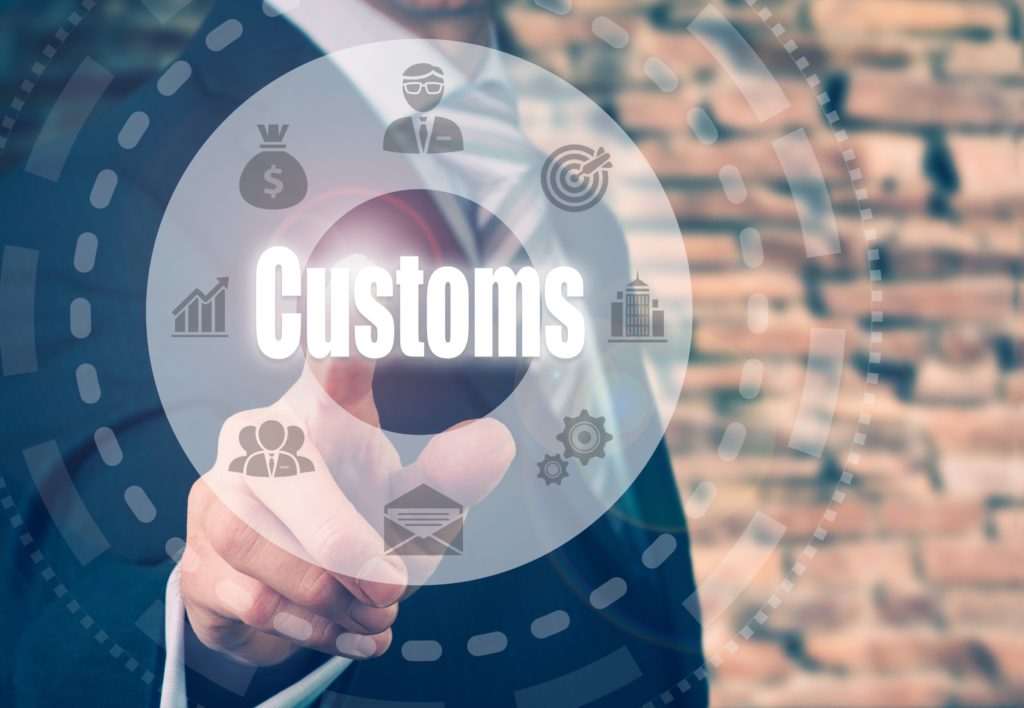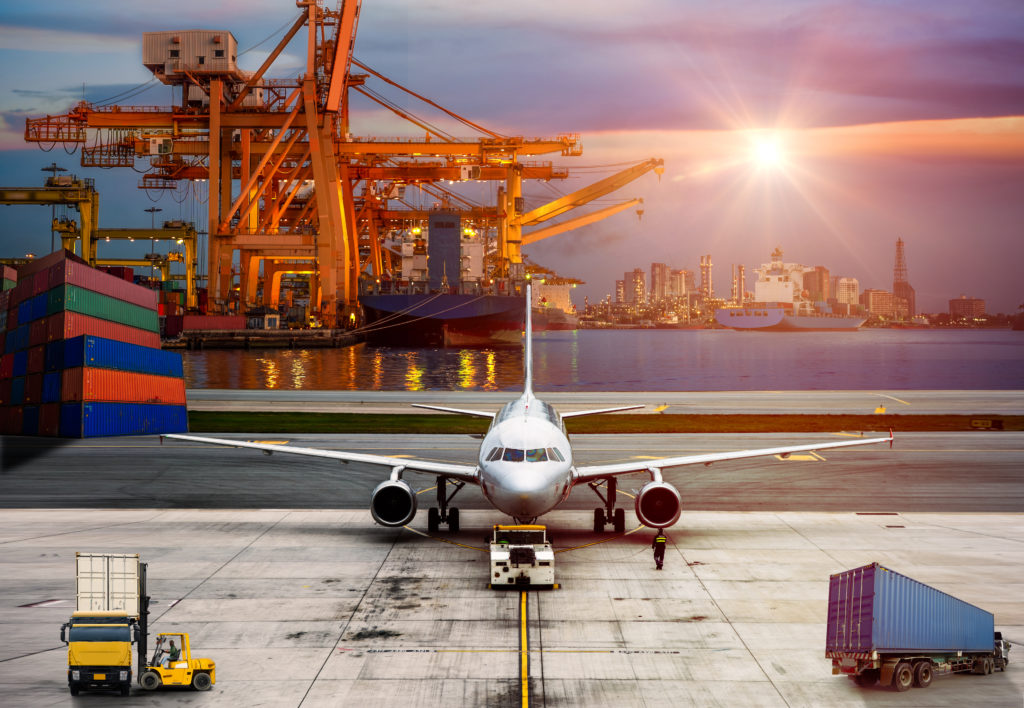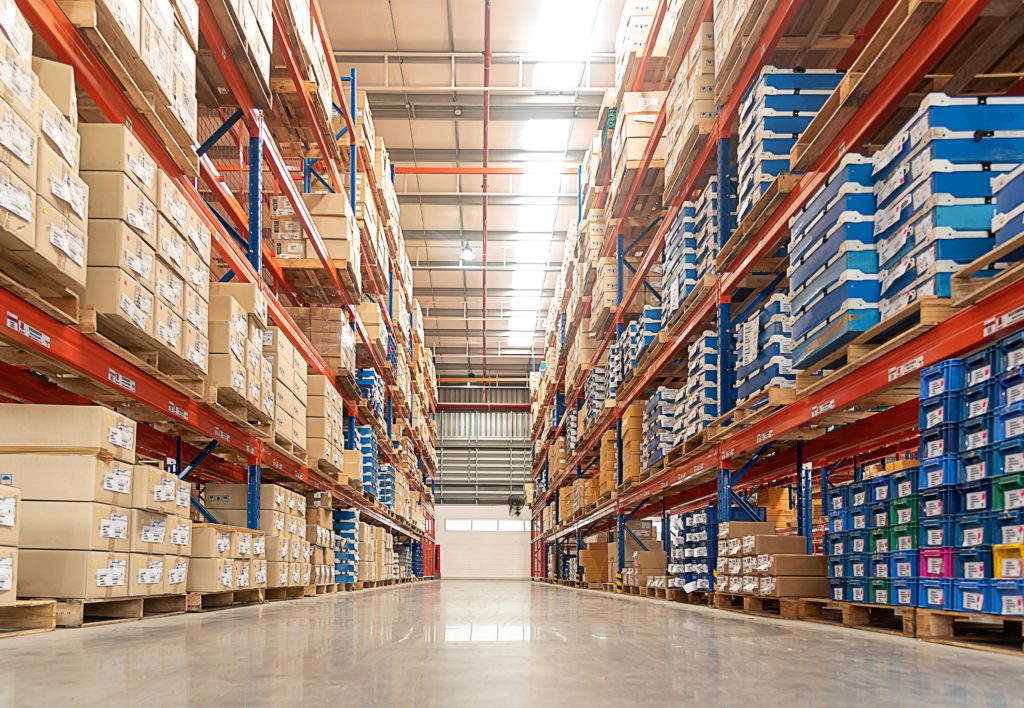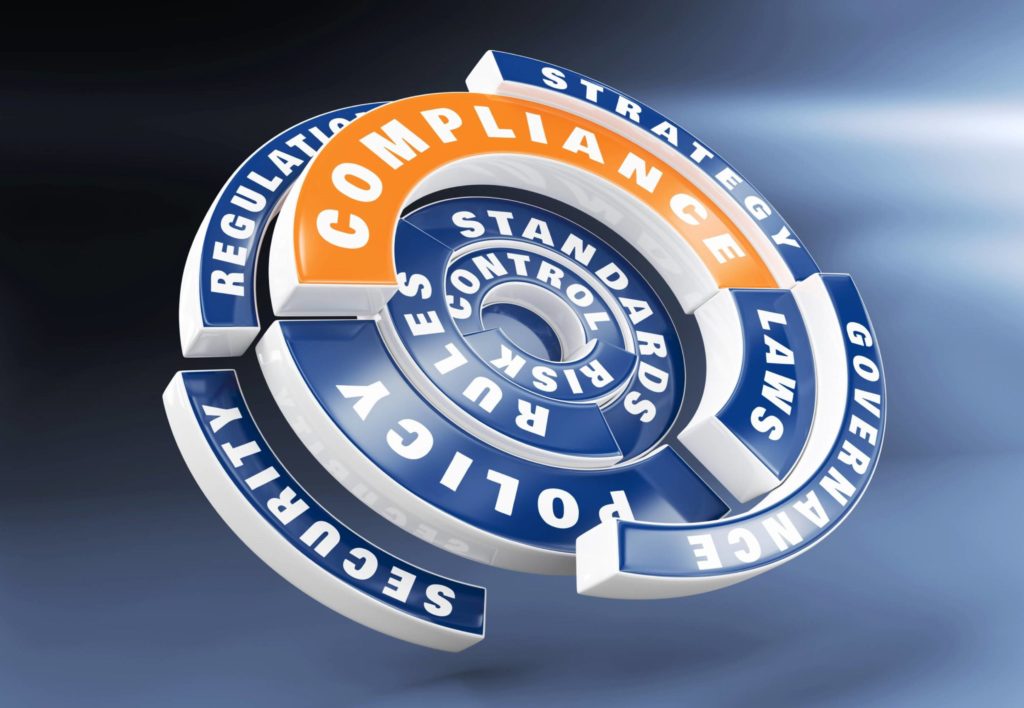Featured Links
- Customs Clearance of Imported Merchandise
- What is Section 321 Entry?
- What is Automated Commercial Environment (ACE)
- What is an Automated Broker Interface (ABI)?
- Who is Ultimate Consignee?
- What is Non-Resident Importer Program?
- Country of Origin of Imported Merchandise
- What is the Country of Assembly?
- What is the FDA's Country of Manufacture?
- Marking of Country of Origin on U.S. Imports
- What is Customs Bond?
- Reconciliation Prototype and Bond Rider
- Who Needs a Customs Broker?
- What is Customs Ruling Program?
- Classification of Imported Goods
- How is Imported Merchandise Appraised?
- What are Import Quotas?
- What are Trade Remedy Duties?
- Antidumping Duty (AD) and Countervailing Duty (CVD)
- What is Foreign Trade Zone (FTZ)?
- What is Importer Security Filing (ISF)?
- What is Temporary Importation under Bond (TIB)
- What is In-Bond Process?
In-Depth Coverage: Country of Origin
- Country of Origin of Imported Merchandise
- Customs Ruling: Country of Origin
- Country of Origin: Food Products
- Country of Origin: Chemical and Pharmaceutical Products
- Country of Origin & Country of Manufacture: CBP vs. FDA
- Country of Origin: Substantial Transformation or Country of Assembly Test
- Country of Origin and Free Trade Agreement
- Country of Origin and Section 301
Guidance on Customs and Logistics Solution
Importer Security Filing (ISF)
An ISF is required when cargo (ocean only) laden on vessel at a foreign port is destined for shipment to the U.S. Under ISF rule, some importing information and details regarding cargo must be transmitted to the CBP at least 24 hours before goods are loaded onto the vessel.
Customs Clearance
All goods imported into the U.S. are required to be declared to CBP. Our customs broker will help you stay in compliance with customs laws and regulations and clear your goods quickly and efficiently with our electronic Automated Commercial Environment (ACE) and Automated Broker Interface (ABI) Single Window System.
Freight Forwarding
Looking for a freight forwarding partner? To move your cargo from its current location through customs to its final destination we will partner with you to find the best way for your business. Whatever your transportation, logistics or customs clearance needs, we will do our best to customize a solution for your needs.
Warehousing & Distribution
Our warehouse facility offers great potential for serving as a regional hub with over 145,000 SF storage capacity close to Los Angeles Airport & Los Angeles/Long Beach Sea port. With our extensive experience in freight services, your import/export cargo will be handled quickly and effectively.
Non-resident Importer Program
If you want to sell your products in U.S. marketplaces, but you are a business owner located outside of the U.S., and do not have an entity or physical presence in the U.S., you need to be established as a Foreign Importer of Record before your goods can be imported into the U.S. We can help you.
Section 321 Entry
Section 321 entry allows importing free of duty and tax for shipments imported by one person on one day having a fair retail value in the country of shipment not more than $800. We provide our resident and non-resident clients with dedicated ACE eManifest solutions for Section 321 entry of all modes of transportation.
E-Commerce
The Internet has made it easy to find and purchase items from almost anywhere in the world. Our e-commerce experts will help you find the right solution for your international transportation, customs clearance, and delivery to your final destination. We also provide value-added repackaging, warehousing and distribution services.
FDA-Regulated Products and Import Requirements
- What is Food Safety Modernization Act (FSMA)?
- Prior Notice of Imported Foods
- Food Facility Registration
- Risk-Based Preventive Controls for Human Food
- Risk-Based Preventive Control for Animal Food
- Standards for the Growing, Harvesting, Packing, and Holding of Produce for Human Consumption
- What is Foreign Supplier Verification Program (FSVP)?
- Protect Food against Intentional Adulteration
- FDA Regulated Product in Foreign Trade Zone (FTZ)
- Entry Review Process for FDA Regulated Products
- Country of Origin VS Country of Manufacture
- Foods Regulated by FDA or USDA: What is the Difference?
- Label and Labeling Claims for Conventional Food and Dietary Supplements
- What is USDA Country of Origin Labeling (COOL)?
- Import for Export of FDA Regulated Products
- FDA Regulated Products in Personal Baggage or Sending by Mail or Courier
- International Mail Facility (IMF) and FDA Regulation
- Importing Biological Product Regulated by CBER
- Importing Cosmetics and Voluntary Cosmetic Registration Program (VCRP)
- Importing Drugs into the U.S.
- Importing OTC Drugs into the U.S.
- Importing Veterinary Drugs into the U.S.
- Importing Tobacco Products into the U.S.
- Importing Medical Devices into the U.S
- Importing Food Products into he U.S.
- Importing Radiation-Emitting Products into the U.S.
Getting familiar with U.S. import and export laws and regulations
The following Compliance & Guidance Overview are summarized from the official website materials of U.S. Customs and Border Protection (CBP), U.S. Department of Agriculture (USDA), U.S. Environmental Protection Agency (EPA), and Federal Trade Commission (FTC) to help you to get familiar with U.S. laws and regulations that cover import and export business.
Compliance Guidance Overview
ACE & ABI
What are the Automated Commercial Environment (ACE) and the Automated Broker interface (ABI)?
The U.S. Customs and Border Protection (CBP) sets up the Automated Commercial Environment (ACE) as the central body that interconnects and coordinates the electronic data interchange systems of CBP, Partner Government Agencies (PGA), and trade community to facilitate more efficient and faster processing of exports and imports while promoting national security by efficient monitoring and counteract illegal transactions and activities. The Automated Broker Interface (ABI), an electronic data interchange (EDI) system, is a key component of the ACE, which allows qualified participants to electronically file required import data with CBP. ABI software connects directly to ACE to facilitate the information exchange between the trade community and CBP and Partner Government Agencies (PGAs). Read more…
What is Reconciliation in ACE Entry Summary?
The reconciliation process known as the Reconciliation Prototype allows importers to file their entry summaries using the best available information they have on file and electronically “flag” estimated elements, with the mutual understanding that CBP will receive the actual information at a later date. Importers then provide the corrected information on a new type of entry called a Reconciliation. Read more…
In-Depth Coverage: Importing Medical Device
Classification and HTSUS
When goods are imported into the customs territory of the United States (the fifty states, the District of Columbia and Puerto Rico), they are subject to certain formalities involving the U.S. Customs and Border Protection (CBP). In almost all cases, the goods are required to be “entered,” that is, declared to the CBP, and are subject to detention and examination by CBP officers to insure compliance with all laws and regulations enforced and administered by the CBP. Read more…
Customs Bond
What is a Surety Bond and When Do You Need One?
When goods are imported into the United States for commercial purposes and the value of the goods is over $2,500, a customs bond has to be posted by importers as well as by international carriers who transport or carry imported goods through the U.S. Operators of warehouses and facilities that hold, store, manipulate or manufacture the imported goods are often required to obtain a customs bond. Read more…
Reconciliation Prototype and Bond Rider
Importers are responsible to report correct and accurate classifications and values of the imported merchandise to the U.S. Customs and Border Protection (CBP). However, it is not always possible to deliver the information required to clear Customs at the time of entry. The Customs Modernization Act (Mod Act) provides legal authority for reconciliation process known as the Automated Commercial Environment (ACE) Reconciliation Prototype. Read more…
Customs Broker
Customs Broker and Importer Identity Verification
The importation of goods into the United States is complex and involves compliance with numerous requirements ranging from agricultural safety to intellectual property rights, to the payment of appropriate duties and fees. Customs broker is the only person who is licensed to transact customs business on behalf of others. Before a customs broker may transact customs business on behalf of a client, the broker must obtain a valid power of attorney (POA). Read more
Customs Clearance
Automated Commercial Environment (ACE) and Automated Broker Interface (ABI)
ACE offers a centralized Single Window System where the trade community can submit their common data and documentation, such as commercial invoices, certificates of origin, export/import trade declarations and customs manifest declarations, once and simultaneously to CBP and PGAs for admissibility review, and thus dramatically reduce processing time, operational cost, and eliminate redundancy. Read more…
What is Reconciliation in ACE Entry Summary?
The reconciliation process known as the Reconciliation Prototype allows importers to file their entry summaries using the best available information they have on file and electronically “flag” estimated elements, with the mutual understanding that CBP will receive the actual information at a later date. Importers then provide the corrected information on a new type of entry called a Reconciliation. Read more…
Customs Ruling
Customs Ruling Request
There are many complicated factors involved in determining country of origin, classification, appraisement and valuation. In order to avoid potential problems in the clearance of your merchandise, CBP strongly recommends that you familiarize yourself with CBP policies and procedures prior to actually importing/exporting your goods. Read more…
In-Depth Coverage: Importing Cosmetics
Entry of Imported Merchandise
Tariff Classification
When goods are imported into the customs territory of the United States, the goods are required to be “entered.” As part of the entry process, goods must be “classified” in the Harmonized Tariff Schedule of the United States (“HTSUS”). Classifying goods is important not only for duty purposes, but also to determine whether the goods are subject to quotas, restraints, embargoes or other restrictions. Read more…
Entry Process
When a shipment reaches the United States, the importer of record (i.e., the owner, purchaser, or licensed customs broker designated by the owner, purchaser, or consignee) will file entry documents for the goods at the port of entry. It is the responsibility of the importer of record to use “reasonable care” to “enter,” “classify” and “value” the goods and provide any other information necessary to enable the CBP to assess the correct duties, collect accurate statistics, and determine whether all other applicable legal requirements are met. Read more…
Section 321 Entry
Section 321 is the statute that authorizes CBP to provide an administrative exemption to admit free from duty and tax for shipments of merchandise imported by one person on one day having an aggregate fair retail value in the country of shipment of not more than $800. CBP is accepting the Section 321 entry process through the creation of the new Informal Entry Type “86.” Entry Type 86 allows customs brokers and self-filers to electronically submit Section 321 entries through ABI, including those subject to PGA data requirements for clearance. Read more…
Ultimate Consignee
The ultimate consignee at the time of entry or release is defined as the party in the United States to whom the overseas shipper sold the imported merchandise. CBP requires to identify the ultimate consignee at the time of entry or release. A primary purpose of the ultimate consignee requirement is to enable CBP to have knowledge of both the person to whom and the place where the imported merchandise is going in the United States. Read more…
Country of Origin
Country of Origin of Imported Merchandise
The country of origin of merchandise imported into the customs territory of the United States is important for several reasons. The country of origin of merchandise can affect, among other things, the rate of duty, the eligibility for special programs, admissibility, quota, procurement by government agencies and marking requirements. Read more…
Marking of Country of Origin on U.S. Imports
Every article of foreign origin entering the United States must be legibly marked with the English name of the country of origin unless an exception from marking is provided for in the law. The purpose of country of origin marking is to inform the ultimate purchaser in the United States of the country in which the imported article was made. Read more…
Country of Origin and Country of Manufacture: CBP vs. FDA
When FDA-regulated products are imported into the United States, information is required to be reported to CBP and the FDA. The country of origin of the imported products must be reported to both CBP and the FDA. Unfortunately, the country of origin for the purpose of the report to CBP and FDA can be different. Read more…
In-Depth Coverage: USDA-Regulated Products
- Importing USDA-Regulated Food Products
- Import Regulation by USDA Agricultural Marketing Service (AMS)
- Food Products – FDA or USDA Regulated
- Country of Origin Labeling
- Importing Animals, Animal Products, and Biologics into the US
- Importing Meat, Poultry, and Egg Products into the US
- Labeling and Marking of Imported Meat, Poultry, and Egg Products
- USDA National Organic Program (NOP)
- Agricultural Safeguards and USDA Licensing
E-Commerce
E-Commerce and Internet Shopping
Every day, millions of Americans make online purchases through e-commerce, which frequently involve importing commodities sourced outside the United States. The Internet has made it easy to find and purchase items from almost anywhere in the world. The shift from traditional methods of importing via large, containerized shipments to small, low-value packages has presented new challenges not only for CBP. Read more…
Foreign Trade Zone
What is Foreign Trade Zone?
A Foreign Trade Zone (FTZ) is a secure area under the supervision of the Customs and Border Protection (CBP) that is physically located within the United States, but is considered to be outside of the Customs territory of the United States for the purposes of payment of duty. Read more…
Importer Security Filing (ISF)
Importer Security Filing (ISF) and Additional Carrier Requirements
The Importer Security Filing, commonly known as the “10+2” initiative, is a CBP regulation that requires importers and vessel operating carriers to provide additional advance trade data to CBP for non-bulk cargo shipments arriving into the United States by vessel. Under the ISF rule, the ISF Importer,” or their agent (e.g., licensed customs broker), must electronically submit certain advance cargo information to CBP in the form of an Importer Security Filing. Read more…
Quotas and Visas
Import Quotas
Import quotas are quantity controls that regulate the amount of various commodities that can be imported into the United States during a specified period of time. There are primarily three types of import quotas administered by CBP: absolute quotas, tariff-rate quotas (TRQs), and tariff preference levels (TPLs). Read more…
Textile Quotas and Visas
Textiles and wearing apparel imported for commercial use may be subject to quota and visa requirements associated with preferential duty treatment, depending on the country where the goods are produced. It is also critical to know the classification of the goods, and the associated 3-digit category number, if applicable, in order to determine whether quota or visa restrictions apply to the particular item. Read more…
Release of Quota-Class Merchandise under a Special Permit for Immediate Delivery
Release of quota-class merchandise under a special permit for immediate delivery (ID) before the proper presentation of an entry summary does not grant any priority or status, nor entitle the goods to any other quota benefit. Read more…
Agricultural Safeguards and USDA Licensing
Agricultural safeguards are the additional duties provided for in Heading 9904 of the HTSUS that are associated with over-quota (high) duty rate provisions. In order for the quota to be properly reported, the Heading 9904 provision must be matched with an appropriate Chapter 1-97 provision. Read more…
In-Depth Coverage: Customs Valuation
Temporary Importation under Bond (TIB)
What is Temporary Importation under Bond (TIB)?
A Temporary Importation under Bond (TIB) is a temporary importation of goods under bond, not imported for sale or sale on approval, without payment of duty and merchandise processing fee (MPF) with the intent to export or destroy the goods. Read more…
Trade Remedy Duties
Trade Remedy Duties
The United States has established procedures by which additional duties can be imposed on imports that are “unfairly” traded and cause “material injury” to the competing domestic industry. The most commonly used trade remedies are called antidumping duty (AD) and countervailing duty (CVD). We ensure that your shipment is in compliance with laws and regulations. Read more…
Antidumping Duty (AD) and Countervailing Duty (CVD)
A company is said to be “dumping” if it exports a product at a price lower than the price it normally charges on its own market, or alternatively, lower than its cost of production or the price it charges in third country markets. Countervailing duty, also known as anti-subsidy duty, measures may be applied if an actionable subsidy is found to cause material injury to a domestic industry. Read more…
Foreign Trade Zone (FTZ) and AD/CVD
The Foreign Trade Zone procedures shall not be used to circumvent AD/CVD orders. Items subject to AD/CVD orders will only be admitted to the zone in privileged foreign status. When these items are entered into the Customs territory for consumption, the items shall be subject to AD/CVD procedures as appropriate. Read more…
Section 201
Section 201 or “safeguard” actions are designed to provide a temporary “safeguard” in order to facilitate positive adjustment of a domestic industry to import competition. “Positive adjustment” in the law means the ability of the industry to compete successfully with imports after termination of the safeguard measure, or the industry’s orderly transfer of resources to other productive pursuits; and the ability of dislocated workers to transition productively. Read more…
Section 232
The tariffs are authorized under Section 232 of the Trade Expansion Act of 1962. These tariffs cover nearly all importation of steel and aluminum products into the United States. The justification under this law is that it is a national security need that the USA import less steel and aluminum and therefore must have the ability to produce it domestically. Read more…
Section 301
Section 301 tariffs were imposed on Chinese products in response to the investigation of the Office of the United States Trade Representative (USTR) that found the government of China was engaging in unfair trade acts, policies, and practices related to the unreasonable and discriminatory transfer of American technology, intellectual property, and innovation. Read more…
In-Depth Coverage: Trade Remedies
Transportation in Bond
What is Transportation in Bond?
The in-bond process regulated by CBP allows imported merchandise to be entered at one U.S. port of entry without appraisement or payment of duties and transported by a bonded carrier to another U.S. port of entry or other authorized destination provided all statutory and regulatory conditions are met. At the destination port, the merchandise is entered or exported. Read more…
Valuation and Appraisement
Customs Valuation and Appraisement
When goods are imported into the United States, in almost all cases, the goods are required to be “entered,” that is, declared to U. S. Customs and Border Protection (CBP), and are subject to examination by Customs officers to insure compliance with all laws and regulations enforced or administered by CBP. Read more…
What is the Price Actually Paid or Payable?
The transaction value of imported merchandise is the price actually paid or payable for the merchandise when sold for exportation to the United States, plus certain statutory additions, such as assists, royalties, and/or the proceeds of a subsequent resale in the U.S. Read more…
Buying and Selling Commissions
Many import transactions involve a party (or parties) who is neither the seller nor the buyer but an intermediary who assists either the buyer or seller in the purchase or sale of the imported merchandise. Identifying the role of the intermediary is important in determining the transaction value of the imported merchandise. Read more…
Imported on Consignment
Generally, the appraised value of all merchandise imported into the United States is the transaction value of the goods. However, where transactions do not involve the payment of a price they cannot be regarded as sales under the General Agreement on Tariffs and Trade (GATT). For goods imported on consignment, the goods are shipped to the country of importation not as a result of a sale, but with the intention that they would be sold for the account of the supplier, at the best price obtainable. Read more…
Rebates Subsequent To Importation
Any rebate of, or other decrease in, the price actually paid or payable that is made or otherwise effected between the buyer and seller after the date of importation of the merchandise into the United States shall be disregarded in determining the transaction value.” Read more…
Transaction Value for Related Party Transaction
The primary method of appraisement is transaction value, which is defined as “the price actually paid or payable for the merchandise when sold for exportation to the United States,” plus amounts for certain statutorily enumerated additions to the extent not otherwise included in the price actually paid or payable. Read more…
What is an “assist?”
An assist is any of the items that the buyer of imported merchandise provides directly or indirectly, free of charge or at a reduced cost, for use in the production or sale of merchandise for export to the United States. Read more…
What is First Sale?
Where there are multiple sales of goods prior to their importation into the United States, the First Sale rule allows importers, in certain circumstances, to use the price paid in the “first or earlier sale” as the basis for the customs value of the goods rather than the price the importer ultimately paid for the goods. Read more…
